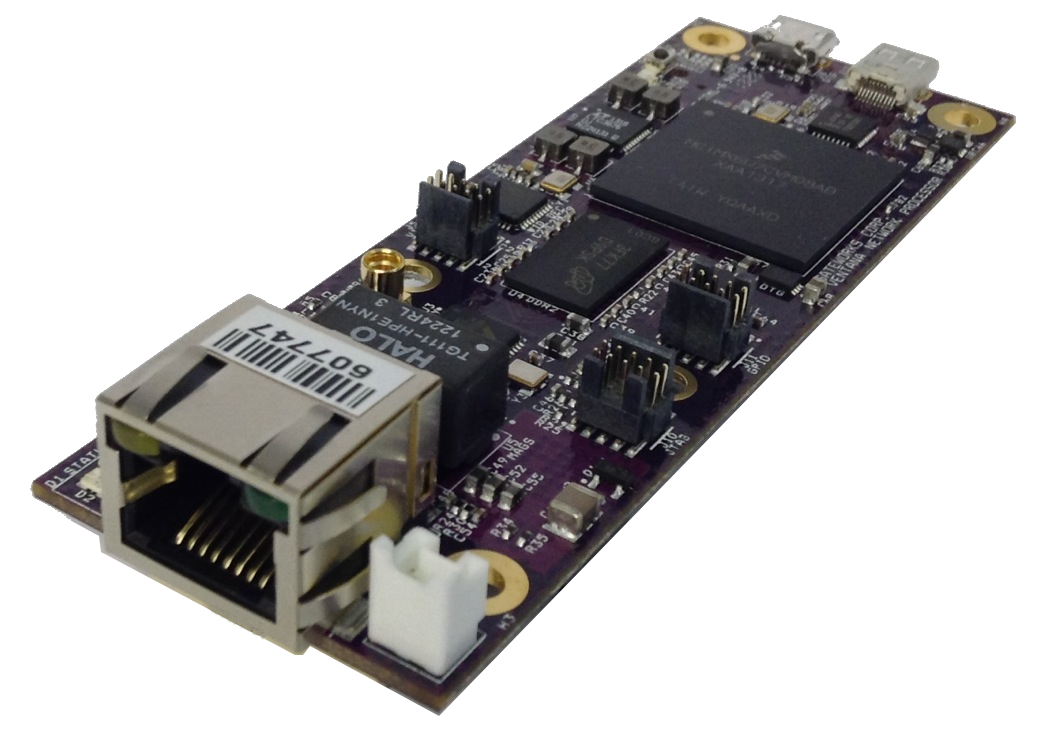| Version 72 (modified by , 7 years ago) ( diff ) |
|---|
Gateworks Newport Family Support
 Getting Started |
Newport Software |
Peripherals |
User Manuals |
|
Wireless / WiFi Radios |
Cellular Modems |
GPS |
 3D Model |
The Gateworks Newport product family utilizes the Cavium ARM ThunderX CN80xx / CN81xx SoC (System On Chip) offering a large variety of peripherals with a focus on Networking, and Security. See here for a product comparison matrix.
Links
Please note: This is a subset of information for Newport, however, please visit our Main Wiki for all other information
Software
Peripheral Support
- Gateworks Expansion Modules - GW16081, GW16082, GW16083
- SPI Support
- I2C Support
- GPIO Control
- LED Control
- Connector and Cable Information
- mSATA Information
- GPS Support
- CAN Bus Support
- PCI/PCIe information
- PCIe Accessory Cards
- MultiMediaCard (microSD/eMMC) Information
- Gateworks System Controller (GSC) - Temperature, voltage, RTC, GPIO, Digital IO, I/O, pushbutton, etc
- Gateworks Enclosures
Performance / Processor / Memory / Power / Thermal
Other Info
- Product Info
- Where to Buy
- Newport Board Ordering Options
- Newport Board Errata
- Linux Kernel Device-Tree info
All Gateworks newport pages
User Manual
Processor Reference Manual / Datasheet / Errata
The Cavium Website contains details about the OCTEON TX Dual and Quad core 64bit ARM based SoC's.
Additional references:
Firmware, BSP (OS), GSC Update Procedures
See this page for all firmware related information
Jump to img.gz installation procedure using bootloader, serial, and tftp
Newport Ethernet
Newport supports 1GbE. If 10GbE support is needed, please email sales@gateworks.com
Newport Ethernet device mapping:
| Board | Connector | Silkscreen | U-Boot | Linux | PoE | Phy |
|---|---|---|---|---|---|---|
| GW640x | J21 | Eth#0 | vnic4 | eth4 / enp5s0f5 | 802.3af/at | RGMII DP83867IS |
| J22 | Eth#1 | vnic0 | eth0 / enp5s0f1 | Passive 8-60V | QSGMII VSC8574 Port0 | |
| J22 | Eth#2 | vnic1 | eth1 / enp5s0f2 | None | QSGMII VSC8574 Port1 | |
| J22 | Eth#3 | vnic2 | eth2 / enp5s0f3 | None | QSGMII VSC8574 Port2 | |
| J22 | Eth#4 | vnic3 | eth3 / enp5s0f4 | None | QSGMII VSC8574 Port3 | |
| GW630x | J21 | Eth#1 | vnic1 | eth1 / enp5s0f2 | 802.3af/at | RGMII DP83867IS |
| J20 | Eth#2 | vnic0 | eth0 / enp5s0f1 | Passive 8-60V | SGMII DP83867IS |
Creating a microSD recovery image
If your primary boot won't boot for some reason (ie, you corrupted it during development) you can boot from a microSD (see here).
To create a bootable microSD meant for recovery purposes only needing the Bootloader you can use firmware-newport.img:
- On a Linux host:
DEVICE=/dev/sdc # set to the microSD on your host sudo dd if=firmware-newport.img of=$DEVICE
- Be careful to set the DEVICE above to the device the microSD appears as on your Linux host - you do not want to overwrite part of your hosts filesystem
- On a Newport board booted from eMMC from U-Boot:
mmc list # if booted from eMMC you should see microSD as dev 1 mmc dev 1 # select microSD tftpboot ${loadaddr} firmware-newport.img && mmc write ${loadaddr} 0 8000
Boot Device
Some boards have multiple boot device and may allow selection of which one is the 'primary boot device':
| board | Primary Boot Device | Alternate Boot Device |
|---|---|---|
| GW630x | on board eMMC | microSD |
To boot from the alternate boot device manually you can press-and-release the user pushbutton 5 times in a row and the board will power cycle primary power (the 3.3V LED will go off, then on again) and the board will boot from the alternate boot device.
Boards with an Alternate boot device also have a boot watchdog such that if the current boot device fails to boot within 30 seconds, the board will power cycle primary power and attempt boot from the other boot device.
The bootloader also has a notion of boot device, either the built in eMMC or an external microSD. This is controlled through the UBoot variable 'dev'. The dev variable is purely for the bootloader, and does not signify what device to boot the kernel/rootfs from.
Note if booting with the onboard eMMC as the primary boot device, “0/mmcblk0” is the U-Boot/Linux device node for eMMC and “1/mmcblk1” is the U-Boot/Linux device node for microSD. When booting from the alternate device (microSD) this is swapped.
Please also reference:
Booting to a kernel/rootfs on the microSD
This assumes the bootloader will remain on the eMMC, but then we switch to the microSD for the kernel/rootfs.
Run the following commands in the uboot bootloader command prompt on the Newport SBC bootloader serial console:
#This sets the bootargs, make special note of the root = and adjust partition as necessary
setenv bootargs 'cma=64M coherent_pool=16M net.ifnames=0 root=/dev/mmcblk1p1 rw rootwait console=ttyAMA0,115200n8 earlycon=pl011,0x87e028000000'
#This loads the kernel file (Image) from folder boot (on microSD) into memory
ext4load mmc 1:1 ${kernel_addr_r} boot/Image
#This boots the board
booti ${kernel_addr_r} - ${fdtcontroladdr}
Troubleshooting:
- Use the ext4ls to confirm you can read the microSD and see the kernel in the boot folder
GW6304-B> ext4ls mmc 1:1 boot <DIR> 4096 . <DIR> 4096 .. 12066824 Image
Board Support Packages (BSP) Software


- Gateworks Newport Board Support Package
- Pre-built Firmware Images
- Newport Boot Firmware (up to and including the Bootloader)
- Newport U-Boot Bootloader
- Linux kernel support
- Booting Third Party Linux Distro's on Newport
- Newport JTAG Programming
Choosing a BSP
Gateworks offers several Board Support Packages for the Newport Product family. Which one we recommend depends a bit upon what your goal is and what your experience level is.
- Ubuntu
- Recommended for developers trying to heavily leverage opensource software packages or libraries that are not supported by the other BSP's. This is the most user-friendly for developers new to Embedded Linux but will not produce a very trimmed down filesystem image.
- Uses mainline kernel.
- Supports all Newport features.
- Documentation provided to use Ubuntu pre-built packages and debootstrap to create a root filesystem in minutes
- Native compilation: no SDK or cross-toolchain needed
- OpenWrt - intended for wireless routers and access points (low flash and memory footprint)
- Recommended for networking users wanting to create a headless router, VPN, basestation, wireless access point and more. Produces by far the smallest storage and memory footprint but users new to Embedded Linux will have a bit of a learning curve
- Fairly up-to-date and/or vanilla kernel support
- Latest wireless drivers (via linux-backports)
- Custom application config and init system (nice for small footprint, but can make adding support for additional packages more work)
- Wide variety of packages (including a fairly nice web-admin)
- Console-based build system (expect 60mins to build BSP for a specific board family)
- Downloadable SDK and Toolchain available to build apps on a development host without building the entire BSP
- easy firmware upgrade (sysupgrade) and factory-default reset mechanism
- Pre-built images available
Newport BSP Software Support Comparison
The following table shows details on current device support per BSP:
| Feature | OpenWrt | Ubuntu | Notes |
|---|---|---|---|
| Version | 18.0x | 16.04 (xenial) | |
| Kernel | 4.14.x | 4.14.x | |
| RS232 | Yes | Yes | |
| MMC | Yes | Yes | |
| SPI | Yes | Yes | 1 |
| GPS / GPS PPS | Yes | Yes | |
| RTC | Yes | Yes | |
| HWMON | Yes | Yes | |
| LED/GPIO | Yes | Yes | |
| USB 3.0 | Yes | Yes | |
| PCI | Yes | Yes | |
| SATA | Yes | Yes | |
| crypto | Yes | Yes | 4 |
| CAN | Not yet | Not Yet | |
| RS485 | Yes | Yes | 2 |
| ventana/expansion GW16081 | Not Yet | Not Yet | 3 |
| ventana/expansion GW16082 | Yes | Yes | 3 |
| ventana/expansion GW16083 | Not Yet | Not Yet | 3 |
- SPI does not currently support full-duplex - issue is being investigated with Cavium
- RS485 has not yet been fully validated but uses the same shared transceiver as RS232 which has been validated. RS485 half duplex mode would require adding support for TIOCSRS485 or managing the TXEN GPIO (gpio12) from userspace.
- Requires a board with a Mezzanine connector.
- HW Compression offload is supported (DEV_CAVIUM_ZIP drivers/crypto/cavium/zip.c) and crypto is supported (DEV_CAVIUM_CPT drivers/crypto/cavium) although there may be additional features that could be supported with additional driver work.
Ubuntu
Gateworks offers a pre-built Ubuntu distribution using the latest Gateworks kernel as well as instructions on how to build your own Ubuntu based distribution.
OpenWrt Board Support Package (BSP)
The Newport OpenWrt BSP provides the following:
- Linux 4.x kernel (fairly vanilla)
- latest wireless drivers (compat-wireless)
- tuned for minimal FLASH/memory footprint (entire distro fits on embedded 16MB FLASH)
- simple upgrades and factory-reset capability provided by overlay filesystem
Newport OpenWrt BSP:
- Pre-Built Image (see firmware-update for instructions on how to install)
- Source:
- https://github.com/Gateworks/bsp-newport - Newport BSP support scripts and Makefile (watch)
- https://github.com/Gateworks/openwrt - Gateworks OpenWrt BSP (watch)
- Additional Gateworks OpenWrt pages:
- OpenWrt
- OpenWrt/Configuration
- OpenWrt/GPS
- OpenWrt/Packages
- OpenWrt/Patch
- OpenWrt/SDK
- OpenWrt/Video_Out
- OpenWrt/building
- OpenWrt/factoryreset
- OpenWrt/gpio
- OpenWrt/hotplug
- OpenWrt/init
- OpenWrt/kernelconfig
- OpenWrt/logging
- OpenWrt/network_config
- OpenWrt/resize
- OpenWrt/swconfig
- OpenWrt/sysupgrade
- OpenWrt/upstream
- OpenWrt/webadmin
- OpenWrt/webserver
- OpenWrt/wireless
- OpenWrt/wireless/access_point
- OpenWrt/wireless/client
- OpenWrt/wireless/relayd
- OpenWrt/wireless/wireless_bridge
- join the openwrt-devel mailing list to follow upstream OpenWrt activity
Third Party Linux Distros
While Gateworks cannot fully support all Linux distros, it is relatively simple to overlay a Gateworks Newport kernel onto any non-Gateworks third party Linux distro rootfs image.
The following links will describe what is needed:
- Linux kernel supporting Newport: linux/kernel
- Root Filesystem: see below
- Bootable media: linux/blockdev
Root filesystem Sources
There are several sources of pre-built root filesystems that are compatible with Newport. As Newport uses an ARM 64bit based SoC, you need to use something that is compatible with an ARMv8 instruction set. Many pre-built distributions will reference 'arm64' which means 'ARM 64-bit' which is appropriate for the CN80XX / CN81XX SoC.
Some popular third-party sources:
- Ubuntu Core - this is a minimal filesystem that you can build off of at runtime by adding packages from various repositories.
- Linaro - Linaro has several root filesystems including server, nano, developer, core, and ALIP. Each root filesystem will have different things installed for different purposes. Choose carefully which will work for you.
Notes:
- some root filesystems may require you to manually add a user before booting (ie Ubuntu Core)
- the default Newport bootloader expects to find the Image in the /boot directory on the 2nd partition of type ext2/3/4
Mainline Linux Kernel support
Gateworks actively participates in the development of the Linux kernel.
Cavium licenses CPU core IP from ARM and the name they give the CPU core within the OCTEON-TX CN80XX / CN81XX is the Cavium 'ThunderX'. Therefore many of the peripheral drivers within the Linux kernel have 'thunderx' in their name and more often then not the 'OCTEON' name refers to the older OCTEON MIP64 core.
The following table shows what OCTEON-TX CN80XX / CN81XX peripherals support is available in the mainline kernel starting from 4.13:
| Feature | Support | Notes |
|---|---|---|
| SMP | Yes | ARCH_THUNDER |
| serial UART (SBSA) | Yes | SERIAL_AMBA_PL011 drivers/tty/serial/amba-pl011.c |
| watchdog Watchdog (SBSA) | Yes | ARM_SBSA_WATCHDOG drivers/watchdog/sbsa_gwdt.c |
| I2C | Yes (4.9+) | I2C_THUNDERX drivers/i2c/busses/i2c-{octeon-core,thunderx-pcidrv}.c |
| Networking BGX (SGMII) | Yes (4.2+) | THUNDER_NIC_BGX drivers/net/ethernet/cavium/thunder/thunder_bgx.c |
| Networking RGX (RGMII) | Yes (4.9+) | THUNDER_NIC_RGX drivers/net/ethernet/cavium/thunder/thunder_xcv.c |
| Networking MDIO (PHY) | Yes (4.6+) | MDIO_CAVIUM/MDIO_THUNDER drivers/net/phy/mdio-{cavium,thunder}.c |
| PCI | Yes (4.6+) | PCI drivers/pci/host/pci-thunder-{ecam,pem}.c |
| SPI | Yes (4.9+) | SPI_THUNDERX drivers/spi/spi-thunderx.c |
| MMC eMMC / microSD | Yes (4.12+) | MMC_CAVIUM_THUNDERX drivers/mmc/host/thunderx-mmc.c |
| HW RNG (Hardware Random Number Generator) | Yes (4.9+) | HW_RANDOM_CAVIUM drivers/char/hw_random/cavium-rng*.c |
| HW Compressions offload | Yes (4.12+) | DEV_CAVIUM_ZIP drivers/crypto/cavium/zip.c |
| Crypto | Yes (4.11+) | DEV_CAVIUM_CPT drivers/crypto/cavium |
| RTC | Yes | RTC_DRV_DS1672 drivers/rtc/rtc-ds1672.c |
| LED/GPIO | Yes (4.14+) | GPIO_THUNDERX drivers/gpio/gpio-thunderx.c |
| USB 3.0 | Yes | USB_XHCI_PCI |
| mSATA | Yes | SATA_AHCI |
The following kernel configs should be enabled for the OCTEON-TX CN80XX / CN81XX:
- SERIAL_AMBA_PL011 - ARM SBSA UART
- MMC_CAVIUM_THUNDERX - MMC
- EDAC_THUNDERX - Error Detection and Correction (works with 'edac-util' app from 'edac-utils' package)
- GPIO_THUNDERX - General Purpose I/O
- SPI_THUNDERX - SPI Controller
- I2C_THUNDERX - I2C Controller
- THUNDERX_NIC_VF - NIC virtual function
- THUNDERX_NIC_PF - NIC physical function
- THUNDERX_NIC_BGX - Network Controller (selects MDIO_CAVIUM/MDIO_THUNDER)
- THUNDERX_NIC_RGX - RGMII Network Controller (selects MDIO_CAVIUM/MDIO_THUNDER)
- MDIO_THUNDER (selected automatically by THUNDERX_NIC*)
- MDIO_CAVIUM (selected automatically by THUNDERX_NIC*)
- PCI_HOST_THUNDER_PEM - PCI host controller
- PCI_HOST_THUNDER_ECAM - Enhanced Configuration Access Mechanism for PCIe memory mapped I/O
- ARM_SBSA_WATCHDOG - ARMv8 Watchdog
- CRYPTO_DEV_CAVIUM_ZIP - Hardware Compression / Decompression off-load
- HW_RANDOM_CAVIUM - Hardware accelerated random number generator
Note that there are many kernel drivers using the name 'Octeon' but they typically refer to a different chipset and the CN80XX / CN81XX have more in common with the Cavium 'ThunderX' architecture as that is the SoC core.
For details on building a Linux kernel see here
Attachments (3)
-
openwrt_logo.jpg
(26.0 KB
) - added by 8 years ago.
openWrt logo
- openwrt_logo.png (13.5 KB ) - added by 7 years ago.
- ubuntu-logo-small.png (6.2 KB ) - added by 7 years ago.
Download all attachments as: .zip
